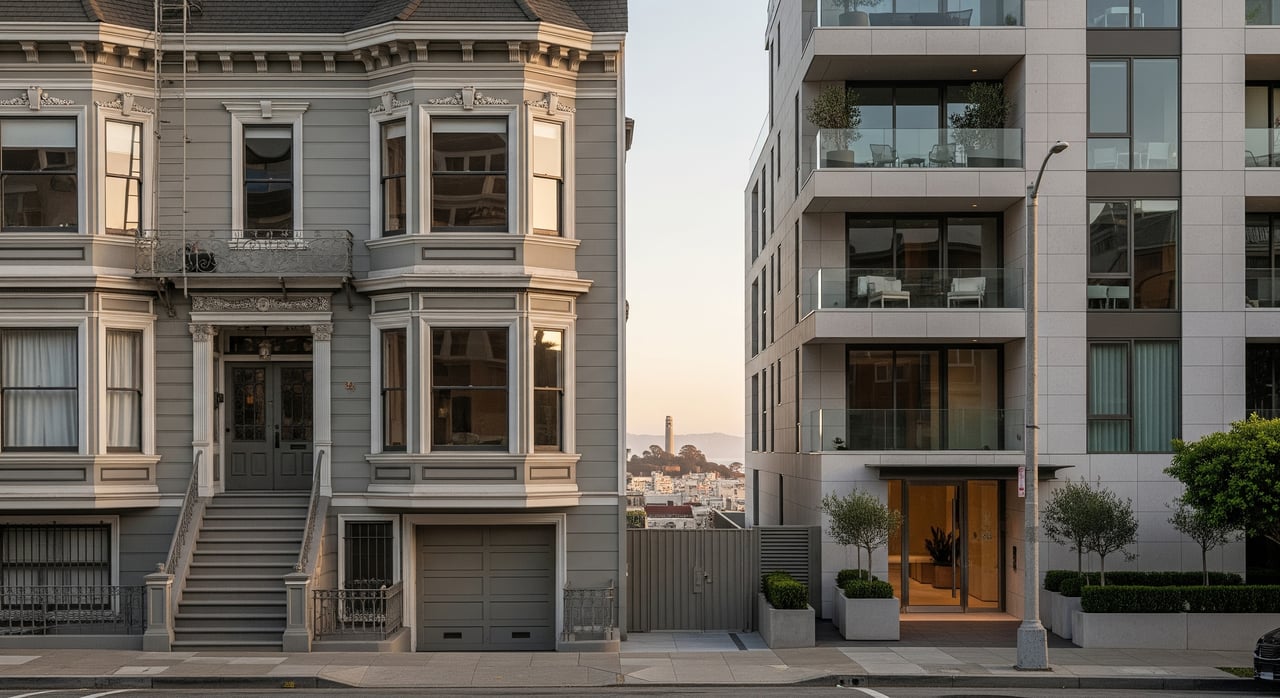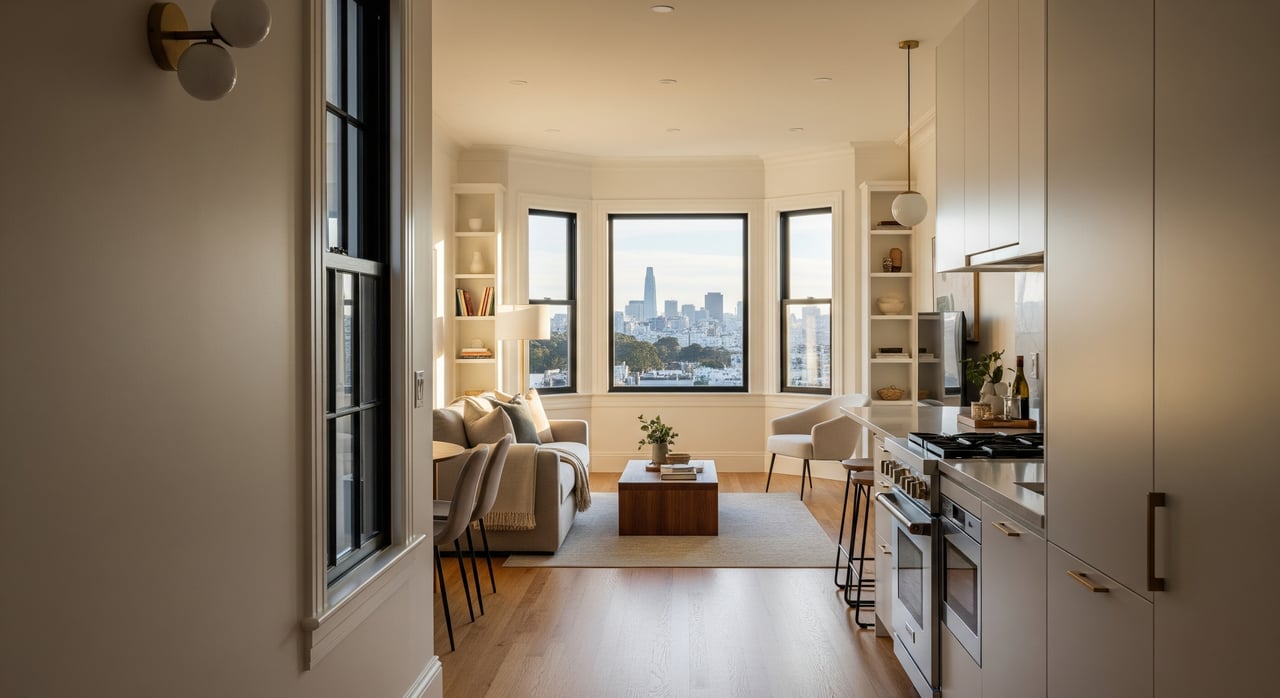According to
recent figures, renter households are feeling the brunt of higher rents, in the sense that around 19 million have to pay more than 30% of their income for rent alone. This sort of news can make the rental a tricky playing field to navigate.
As a San Francisco landlord, you’re likely well aware of the competitive nature of the rental market in the city. With so many renters vying for a limited number of apartments, it’s important to have a lease agreement that not only protects your interests but also appeals to potential tenants.
In this post, we’ll discuss the your options for lease in San Francisco and help you determine which one is the best fit for your property.
Let’s jump right into it!
Lease Types
When it comes to leasing property in San Francisco, there are several different San Francisco lease agreement types to choose from. It’s good to get familiar with all of them to truly understand which might work best for your needs.
So the most common types of San Francisco leasing types include:
Month-to-Month Leases
A month-to-month lease is a flexible and popular option for landlords in San Francisco. This type of lease is typically used for rental properties that are in high demand and have a high turnover rate.
With a month-to-month lease, either the landlord or the tenant can terminate the lease with
30 days’ notice. This makes it a great option for landlords who want the flexibility to make changes to their rental properties, such as renovating or increasing rent. It also appeals to tenants who are looking for a short-term rental.
One of the key benefits of a month-to-month lease is that it allows landlords to adjust rent prices based on market conditions. This can be useful in a city like San Francisco, where the cost of living is high and rental prices can fluctuate. Landlords can also use a month-to-month lease to test out different rent prices and see what works best for their property.
However, it’s important to keep in mind that a month-to-month lease can also be risky for landlords. Since either party can terminate the lease with 30 days’ notice, landlords may find themselves with a vacancy unexpectedly.
Additionally, it can be more difficult to plan for long-term income and expenses with a month-to-month lease.
Fixed-term Leases
A fixed-term lease is a more long-term option that offers stability and predictability for both landlords and tenants. With a fixed-term lease, the landlord and tenant agree to a specific length of time for the lease, such as one year. This allows both parties to plan for the future and have a clear understanding of the terms of the lease.
For landlords, a fixed-term lease can provide a steady stream of income for the duration of the lease. Plus, this type of lease can also be beneficial for landlords who are looking for a long-term tenant for their property. It also offers security and stability for the tenant.
Yet, a fixed-term lease can also be a downside for landlords. If the tenant wants to move out before the end of the lease, the landlord must
find a new tenant quickly or risk losing income.
Furthermore, a fixed-term lease may also limit the landlord’s ability to increase rent or make changes to the property during the lease period.
Subleases
A sublease occurs when a tenant rents out a property they are already leasing to another person. This can be a good option for tenants who are going away for an extended period of time and want to cover their costs while they’re away. Additionally, it can also be beneficial for tenants who are looking for a short-term rental or who may need to move unexpectedly.
For landlords, a sublease can be a good option if they have a tenant who is reliable and willing to take on the responsibility of finding and managing subtenants. This allows the landlord to keep the property occupied and generate income, even if the original tenant is away.
You should understand, though, that a sublease can also be risky for landlords. Since the original tenant is responsible for managing the property and finding subtenants, landlords may have less control over the property.
Landlords might run into issues if the subtenant causes damage or fails to pay rent. Thus, they should outline the responsibilities of both the original tenant and the subtenant. As well, they need to have a clear process in place for handling any issues that may arise.
Master Leases
A master lease is used when a landlord rents out a property to a tenant who then sublets the property to other tenants. This can be a good option for landlords who want to lease out a property to a tenant who will be responsible for managing the property and finding other tenants.
So this lease type allows the landlord to have less involvement in the day-to-day management of the property. It can then also provide a steady stream of income.
A main benefit to master leases is that they allow landlords to earn income from multiple tenants while only having to deal with one main tenant. This can be great for landlords with multiple properties. Or for those who want to focus on other business ventures.
Yet, understand that a master lease can also be a risk. Since the main tenant is responsible for managing the property and finding other tenants, landlords may have less control over the property.
How to Choose the Right Lease in San Francisco?
When it comes to choosing the best lease for your property in San Francisco, it’s important to consider the unique needs of your property and your
potential tenants. For example, if your property is in a high-demand area and has a high turnover rate, a month-to-month lease may be the best option. On the other hand, if your property is in a lower-demand area or you’re looking for a longer-term tenant, a fixed-term lease may be a better fit.
Another factor to consider is the level of responsibility you’re willing to take on as a landlord. For example, if you’re comfortable managing the property and
finding tenants, a master lease may be a good option. However, if you’re not comfortable with that level of responsibility, a sublease may be a better fit.
Final Thoughts
As you now know, each lease has potential benefits and pitfalls. You have to think carefully about how you want to work with tenants and other key players when it comes to getting a lease in San Francisco.
At RayRealtor.com, we can help you navigate the tricky rental climate and figure out what might be the best lease type for you. Why not
contact us to learn more?










